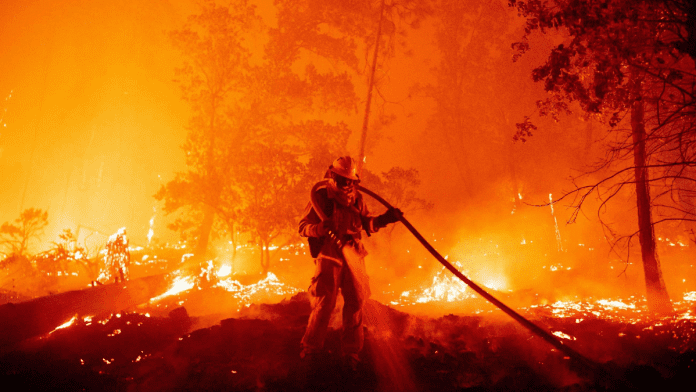News in brief:
– Biden-Harris Administration allocates $500 million to address the wildfire crisis, focusing on local farmers and communities.
– Funding supports USDA Forest Service’s comprehensive strategy, emphasising collaboration and capacity-building to reduce wildfire risk and enhance resilience.
Agriculture Secretary Tom Vilsack announced that the Biden-Harris Administration is injecting nearly $500 million into the USDA Forest Service’s Wildfire Crisis Strategy. This significant investment, part of President Biden’s Investing in America agenda, aims to mitigate the escalating threat of wildfires, particularly affecting local farmers and communities.
Secretary Vilsack emphasised the urgency of addressing challenges posed by climate change, stating, “as climate change exacerbates the challenges our communities, forests, and infrastructure face from catastrophic wildfires, our answer to those challenges has to match the scale of the threat.”
Historic funding for comprehensive strategy
With this new funding, the total investment in the Wildfire Crisis Strategy reaches an unprecedented $2.4 billion, courtesy of the Inflation Reduction Act and Bipartisan Infrastructure Law.
Approximately $400 million will be dedicated to ongoing efforts in the 21 designated priority landscapes, bringing the total investment to $1.6 billion. An additional $100 million will be allocated to the Collaborative Wildfire Risk Reduction Program, extending work beyond these landscapes.

The Collaborative Wildfire Risk Reduction Program is a groundbreaking initiative, leveraging hazardous fuels funds to address high-risk wildfire areas outside the priority landscapes. This includes the Wildland-Urban Interface, where national forests meet homes and communities. The program empowers national forests, in collaboration with Tribes and communities, to enhance local capacity for projects, reducing wildfire risk and improving forest health to safeguard communities and infrastructure.
Strategic approach to wildfire crisis
This announcement aligns with President Biden’s broader agenda to enhance the resilience of lands facing the threat of catastrophic wildfires. The funding provided by the Bipartisan Infrastructure Law and Inflation Reduction Act underscores the administration’s commitment to reducing wildfire risk, supporting federal wildland firefighters, and reinforcing long-term fire preparedness.
The Forest Service’s Wildfire Crisis Strategy, launched in January 2022, has already demonstrated its impact. Over 4.3 million acres of hazardous fuels reduction, including nearly two million acres of prescribed burning, were accomplished in 2023, marking record highs in the agency’s history. This achievement significantly contributes to the protection of communities, critical infrastructure, and essential watersheds.
The Forest Service, in collaboration with partners, communities, and tribes, is poised to intensify efforts in both priority landscape areas and new high-risk regions. This strategic approach is crucial for mitigating the devastating impact of wildfires on socially vulnerable communities, carbon stocks, and critical water sources.



